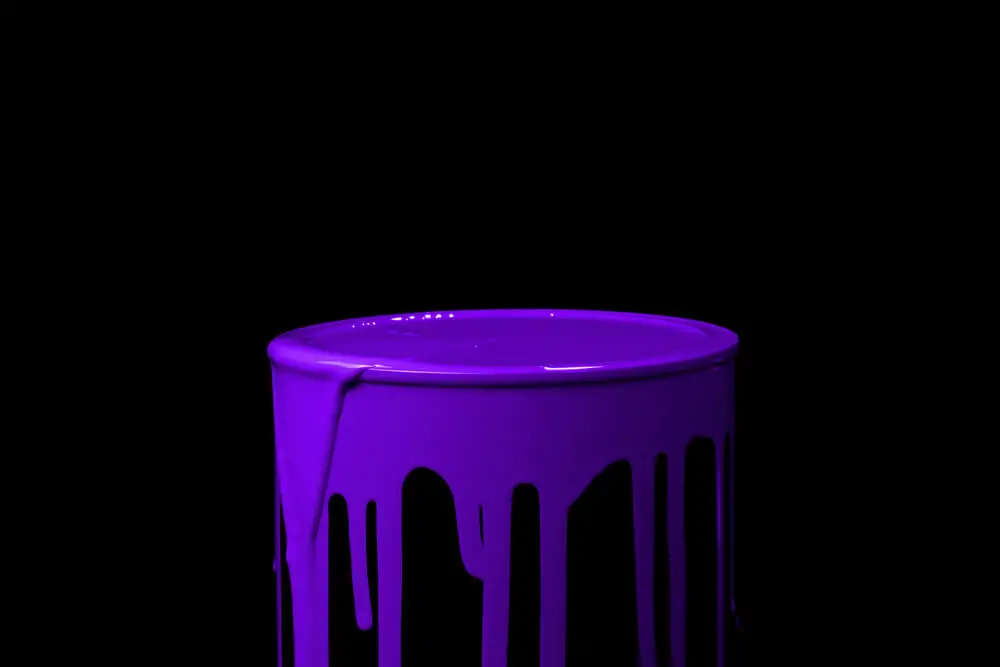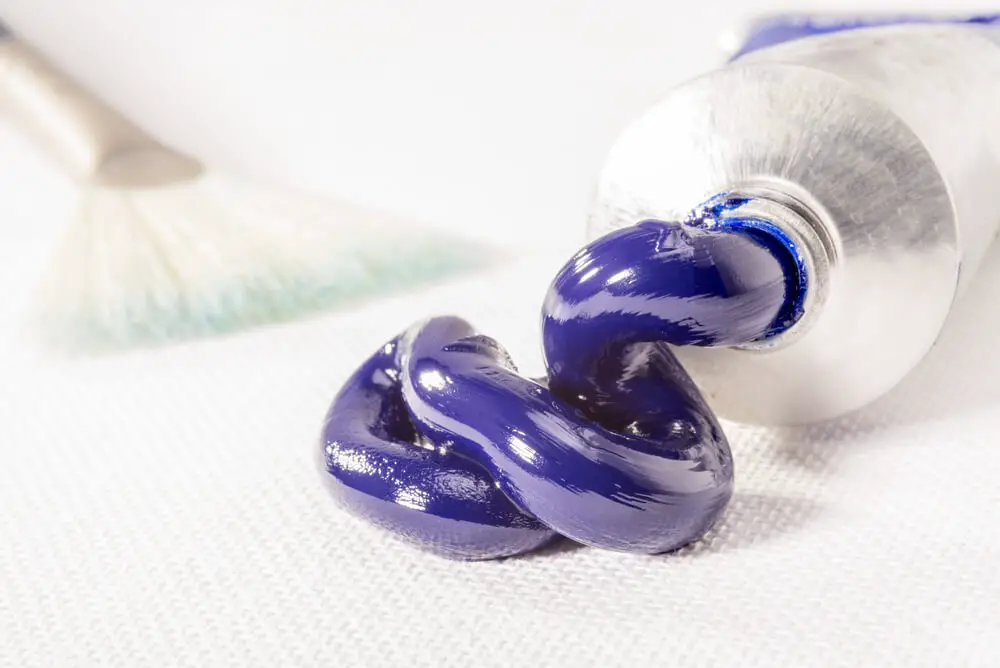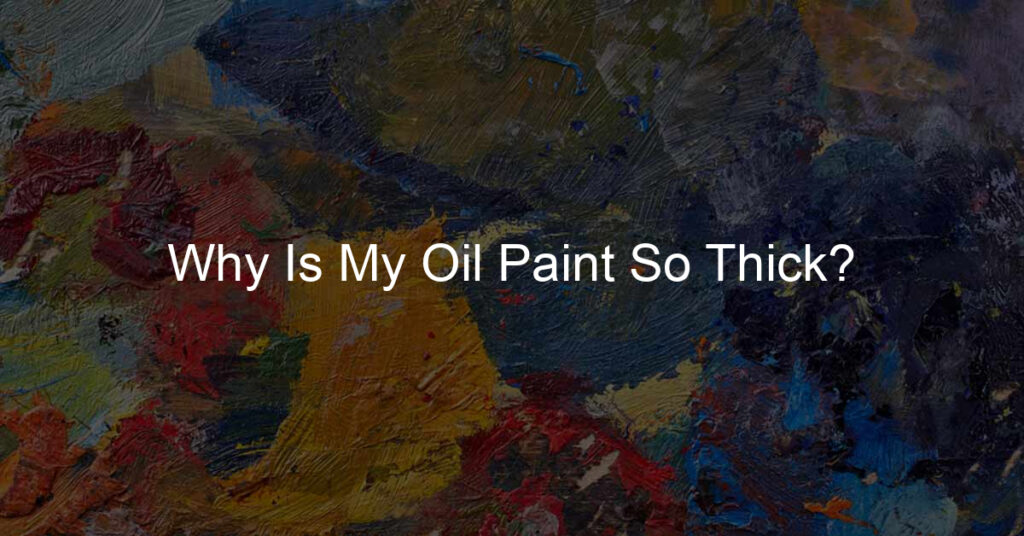Oil painting can be a beautiful and rewarding medium for artists, but it can also be a frustrating and challenging experience when the paint seems too thick. This thickness can often lead to problems in blending colors, uneven application, and difficulty in achieving the desired effects. Understanding why your oil paint may be too thick is crucial for overcoming these challenges and creating vibrant, captivating artwork.
There are several factors that contribute to the thickness of oil paint, such as pigment-to-binder ratio, environmental conditions, and the age of the paint itself. By exploring some of these factors, you can better understand why your paint may be too thick and seek solutions to thin it out and achieve your desired results. In addition, recognizing which type of oil paint you are using and its specific properties can help you work more effectively with the medium.
Understanding Thick Oil Paint

Ingredients and Formulation
Oil paint is made of two primary components: pigments and a binder – typically linseed oil. The ratio of pigments to binder can greatly affect the consistency of the paint. A higher concentration of pigments results in thicker paint, while more binder can create a smoother consistency.
Latex and acrylic paints, on the other hand, use water as a primary component and dry more quickly. Oil-based paints, including the traditional oil paints, take longer to dry, allowing for more extended periods of workability. Old paint left exposed to air may also thicken due to evaporation or oxidation.
Oxidation and Viscosity
The drying process of oil paint involves oxidation, meaning the paint hardens as it reacts with oxygen. This process can cause the paint to become thicker over time, especially if exposed to air for extended periods. To maintain a desirable consistency, make sure to keep the paint in airtight containers.
Viscosity is the measure of a fluid’s resistance to flow. Thicker oil paint has a higher viscosity, which can provide a unique texture when applied to a canvas. This property allows for greater control when creating detailed artwork or building layers of paint on a surface. However, if your oil paint is too thick, you may want to consider adding a medium to alter the paint’s consistency and improve workability.
In summary, it’s essential to understand the inherent properties and ingredients of oil paint when dealing with thick paint. By acknowledging the relationship between pigments, binders, oxidation, and viscosity, you can maintain a desirable consistency and create beautiful artwork.
Thinning Techniques
When working with thick oil paint, there are several thinning techniques that can help you achieve a smoother and more fluid consistency. We will cover different methods using solvents, oils, and additives.
Solvents
Solvents are substances that dissolve other materials and can be used for thinning oil paint. Common solvents for oil paint include:
- Water: While not a traditional choice for thinning oil paint, water can be used in conjunction with water-soluble oil paints. These paints contain a modified oil binder that allows them to mix with water, making it easier to achieve a thinner consistency.
- Turpentine: This is a distilled pine resin used as a paint thinner and medium in oil painting. Turpentine evaporates quickly, making it ideal for quick drying and first layers of paint.
- Mineral spirits: Also known as white spirit or paint thinner, mineral spirits are petroleum-based solvents that evaporate slower than turpentine, making them suitable for upper layers of paint.
Oils
Oils can also be used to thin oil paint, making it more fluid and easier to work with. The most commonly used oils in oil painting include:
- Linseed oil: Derived from flax seeds, linseed oil is a popular medium for extending oil paint due to its drying properties. It can be used to thin paint, improve flow, and increase transparency.
- Safflower oil: Safflower oil is a slow-drying oil that can be mixed with oil paint to reduce its viscosity and increase its luminosity. It is less yellowing than linseed oil, making it suitable for lighter colors.
Additives
Additives are substances specifically formulated to alter the properties of oil paint. For thinning purposes, some popular additives include:
- Thinning medium: A mixture of solvent and binder, thinning mediums are designed to thin oil paint while maintaining its integrity. They allow the artist to maintain control over the paint’s consistency and drying time.
- Flow improver: Flow improvers are specifically designed to increase the paint’s flow and workability on the canvas. They can help to achieve a smoother blend and reduce brush marks.
When thinning oil paint, remember to use the appropriate method for your desired effect and follow the manufacturer’s instructions. Always experiment with different techniques on a test piece first to find the best approach for your specific painting needs.
Correcting Texture and Consistency

Stirring and Separation
When working with oil paint, it is essential to maintain the desired texture and consistency. If your oil paint has become too thick, one possible solution is to stir the paint thoroughly. This helps in separating the pigment from the binder, ensuring an even distribution and restoring the paint’s original consistency.
While stirring, you might notice some impasto effects in the paint. To reduce these effects, you can add a small amount of solvent or medium to the paint and mix well. This will adjust the paint’s liquid consistency, making it more manageable for application.
Using a Paint Sprayer
Another option for correcting texture and consistency issues with your oil paint is using a paint sprayer. Paint sprayers can help regulate the paint’s thickness during application, providing a more uniform and smooth result.
To use a paint sprayer effectively, you’ll need to thin your thick oil paint to a more liquid consistency. Thinning can be achieved by adding small amounts of solvent or medium into the paint while continuously stirring. Keep in mind that different paint sprayers can accommodate varying levels of paint thickness, so it is crucial to consult the sprayer’s guidelines before attempting to use one.
Remember that maintaining the desired texture and consistency in oil paint is essential for achieving your desired artistic outcome. By experimenting with stirring and paint sprayers, you can find the right methods to address your specific paint texture concerns.
Working with Layers
Fat over Lean Rule
When working with oil paint, it’s essential to apply layers in a specific order. The Fat over Lean rule states that each subsequent layer of paint should have more oil content than the previous one. This is because fat layers are flexible and take longer to dry, reducing the risk of cracking over time. Here’s a breakdown of the rule:
- Start with a thin, lean underpainting (lower oil content)
- Gradually increase the oil content in each subsequent layer
- Apply thick and fat layers (higher oil content) in the final stages
To achieve this, you can use mediums to adjust the paint’s thickness and oil content. Make a mix of paint and a lean medium for the first layers, then transition to a fatter medium as you progress.
Thick over Thin Rule
Another crucial guideline when layering oil paint is the Thick over Thin rule. This rule ensures that each layer you apply has a slightly thicker consistency than the previous one. Following this rule helps maintain the stability of your painting and prevents issues like wrinkling or sagging paint layers. To follow the Thick over Thin rule:
- Start with thin, watery layers in the initial stages
- Increase the thickness of the paint in subsequent layers
- Finish with the thickest paint layer
You can achieve this by adding paint thinner or a medium to create a thinner consistency in initial layers and use paint straight from the tube or mixed with a thickening medium for later stages.
Slow Drying Over Fast Drying
The Slow Drying Over Fast Drying principle is another essential aspect of successful layering in oil painting. This rule ensures that each layer of paint dries at an appropriate speed, allowing the painting to remain stable and reducing the risk of cracking. To follow this guideline:
- Use fast-drying colors in the initial layers (e.g., earth tones, acrylics)
- Gradually incorporate slower-drying colors in the middle layers (e.g., alizarin crimson, phthalo green)
- Utilize the slowest-drying oil colors in the final layers (e.g., cadmium red, viridian green)
Following these rules for layering your oil paint can improve the longevity and quality of your artwork, ensuring your paintings remain vibrant and intact for years to come.

Avoiding Common Issues
Cracking and Brush Strokes
One issue that can arise with thick oil paint is cracking. To minimize this, avoid using too much of a fast-drying medium in your paint as it can cause the paint to dry too quickly, leading to cracks. Applying a thin layer of a slow-drying medium, like linseed oil, can help increase flexibility and lessen the chances of cracking.
Another common problem with thick oil paint is visible brush strokes. Using a softer-bristled brush can help reduce the appearance of brush strokes, allowing for smoother application. To further lessen brush stroke visibility, incorporate a medium like Liquin or Galkyd, which provides a smoother, more level paint surface.
Maintaining Detail
Preserving fine detail while working with thick oil paint can be challenging. Here are some tips to help maintain the details in your artwork:
- Use a smaller brush for detailed areas and a larger brush for broader strokes. This helps ensure accuracy without losing the texture that thick oil paint provides.
- When necessary, thin your paint using an appropriate medium, like turpentine or linseed oil, to maintain control in delicate areas of your painting. Adjust the consistency as needed to avoid over-thinning the paint.
- Build the painting up in layers, which allows you to retain fine details without sacrificing the thick texture elsewhere in the painting. Allow each layer to dry before applying the next one. Be mindful of the “fat over lean” principle, meaning that each successive layer should have a higher oil content than the previous one, to prevent cracking.
By considering these points, you can effectively avoid common issues like cracking and visible brush strokes, while maintaining fine details in your thick oil painting, resulting in a finished piece that highlights the unique qualities of this versatile medium.
Product Recommendations and Tips
When working with oil paints, you may sometimes find that the paint is too thick for your desired application. In such cases, it’s essential to know the right techniques and products to achieve the desired consistency and performance.
One reputable brand for oil paints is Gamblin. Gamblin offers a range of high-quality paints that can provide you with excellent results. You can try using their Gamsol solvent to thin your oil paint, as it is an odorless mineral spirit that evaporates slowly and does not affect the paint’s color, value, or texture.
If you are using brand new paint, you can gently mix it in a bucket or palette, breaking up any clumps or globs. Remember to wear gloves to protect your hands from direct contact with the paint, and always work in a well-ventilated area to prevent inhaling any fumes.
If you find that your oil paint is still too thick after trying these methods, you may want to explore other mediums to help thin your paint. Some artists prefer using acrylic paints as a base, as they tend to be more fluid and easier to mix. However, it’s important to note that mixing oil and acrylic paints can result in unpredictable results, so always test a small area before committing to a full-scale project.
Here are a few more recommendations and tips to ensure your painting experience is smooth and enjoyable:
- Always start with small amounts of solvent or medium when thinning your paint. Gradually add more until you achieve the desired consistency.
- Use a palette knife to thoroughly mix your paint and medium, ensuring a homogeneous blend that will apply evenly to your canvas.
- If you find that the paint is too thin or has become runny, you can add a thickening agent like Gamblin’s Cold Wax Medium to restore the desired consistency.
By incorporating these tips and product recommendations, you can overcome the challenges posed by thick oil paint and create stunning artwork with ease.
Frequently Asked Questions
How can I thin out my thick oil paint?
To thin out thick oil paint, you can use a solvent, like turpentine or odorless mineral spirits. Start by using a few drops and mixing it well with your paint on the palette until you achieve the required consistency.
What are the consequences of applying overly thick paint?
Applying thick oil paint can cause uneven coverage, longer drying times, and potential cracking. It can also make it more difficult to achieve fine details or smooth transitions in your artwork.
Does oil paint typically have a thicker consistency than acrylic?
Yes, oil paint generally has a thicker consistency compared to acrylics. Oil paint is known for its creamy and buttery texture, while acrylics tend to be more fluid. However, this can vary depending on the respective brands and paint formulas.
Which brands are known for thick oil paint?
Some brands known for producing thick oil paint include Williamsburg, Old Holland, and Michael Harding. These companies manufacture high-quality, artist-grade paints that have rich pigmentation and a thick consistency.
Can I create Impasto effects with thick oil paint?
Absolutely! Impasto effects are created by applying thick layers of paint to the canvas with a palette knife or brush. Thick oil paint is perfect for achieving this raised texture and can enhance the three-dimensional quality of your artwork.
Is it possible to use a roller with thick oil paint?
Using a roller with thick oil paint can be challenging due to the paint’s consistency. It might not spread evenly and could create a patchy or uneven surface. Regardless, experimenting with a roller could result in unique and interesting effects, though it might be better to thin the paint slightly before using a roller.

















